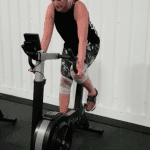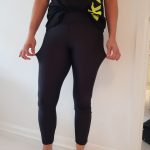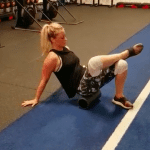In the SPEAR Physiotherapy clinics, we spend as much time talking to our patients about recovery and injury prevention as we do fixing them or working with an existing injury.
This is never more an important time than after a race or long run, such as the recent Great Aberdeen Run, to talk about run recovery! Sunday’s race was brilliant for the city, but the blue skies and sunshine would have made for some tough conditions for the runners.
One of our newest SPEAR physio’s, Aimee shared some video’s before race day talking about dynamic stretches and warm-ups for a running race – you can see them on our Facebook page – but it’s also worth talking about post-run-race recovery.
When it comes to a long or intense running race, how you wind down immediately afterwards and for a few days after the event is just as important as how you warm up beforehand.
Here’s what SPEAR physio Aimee suggests:

Active recovery – light jogging or cycle
The purpose of active recovery is to allow muscles to repair and to engage muscles that are tired or sore from the previous day’s high intense activity.
Active recovery is a workout that is performed at a lower intensity, reduced power or lesser resistance than your regular workout.
Compression

Compression tights are thought to improve the removal of lactic acid from the muscles and blood by improving the blood flow from the muscles back to the heart.
Research conducted in 2017 found that wearing compression tights 24-48 hours post high intensity activity, had a positive effect reducing the severity of DOMS after strenuous exercise. This means that people are able to recover faster and be more effective when returning to training or competition.

Ice Bath
The ice bath is thought to constrict blood vessels, flush waste products and reduce swelling and tissue breakdown. Subsequently, as the tissue warms and the increased blood flow speeds circulation, the healing process is jump-started.
Foam Rolling

Foam rolling is a form of myofascial release that you can do on your own body. It works by releasing fascial tightness so the muscles are able to function more effectively.
To use a foam roller, always roll upwards, towards your lymph glands (these are effectively your waste bin). Use your bodyweight to apply as much pressure as feels comfortable. Slow and steady is the key.
Start by rolling up the length of the muscle, try to avoid rolling over tendons/bony prominence’s and only roll up the muscle 6 times.
Got any questions for Aimee or any of our SPEAR physiotherapy team? Just get in touch. #teamSPEAR
